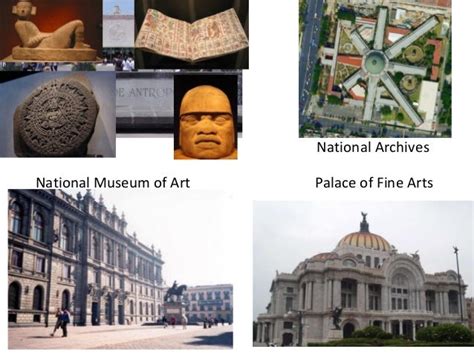Mexico City, with a population of over 21 million, is the most populous city in the Americas and one of the largest primate cities in the world. Primate cities are defined as cities with populations that are more than double the size of the second-largest city in the country. Mexico City’s dominance over the rest of Mexico is even more pronounced, as it has a population that is more than four times larger than the second-largest city, Guadalajara.

The Growth of Mexico City
Mexico City has been growing rapidly for centuries. The city was founded by the Aztecs in 1325, and it quickly became one of the largest and most important cities in the pre-Columbian Americas. After the Spanish conquest of Mexico in 1521, Mexico City became the capital of the colony of New Spain. The city continued to grow throughout the colonial period, and it became one of the most important cities in the Spanish Empire.
After Mexico gained independence from Spain in 1821, Mexico City became the capital of the new nation. The city continued to grow rapidly throughout the 19th and 20th centuries, and it became one of the most important cities in Latin America.
The Challenges of Primate Cities
Primate cities face a number of challenges, including:
- Overcrowding: Primate cities are often overcrowded, which can lead to a number of problems, such as traffic congestion, air pollution, and water shortages.
- Poverty: Primate cities often have high levels of poverty, which can lead to social unrest and crime.
- Inequality: Primate cities often have high levels of inequality, which can lead to social division and conflict.
The Opportunities of Primate Cities
Despite the challenges, primate cities also offer a number of opportunities, including:
- Economic growth: Primate cities are often centers of economic growth, which can benefit the entire country.
- Cultural diversity: Primate cities are often home to a diverse population, which can lead to a rich cultural life.
- Innovation: Primate cities are often centers of innovation, which can lead to new products and services.
The Future of Mexico City
Mexico City is a primate city with a long and complex history. The city faces a number of challenges, but it also offers a number of opportunities. The future of Mexico City will depend on how it manages to address these challenges and capitalize on these opportunities.
The Role of Primate Cities in the Global Economy
Primate cities are playing an increasingly important role in the global economy. These cities are often centers of trade, finance, and manufacturing. They are also home to a large number of multinational corporations. Primate cities are also important centers of innovation and creativity.
The growth of primate cities is driven by a number of factors, including:
- The global economy: The growth of the global economy has led to an increase in demand for goods and services from primate cities.
- The rise of multinational corporations: Multinational corporations are increasingly locating their headquarters in primate cities.
- The growth of the middle class: The growth of the middle class in developing countries is leading to an increase in demand for goods and services from primate cities.
Strategies for Managing Primate Cities
A number of strategies can be used to manage primate cities, including:
- Investing in infrastructure: Investing in infrastructure can help to reduce overcrowding, traffic congestion, and air pollution.
- Promoting economic development: Promoting economic development can help to reduce poverty and inequality.
- Investing in education: Investing in education can help to improve the quality of life for residents of primate cities.
- Encouraging sustainable development: Encouraging sustainable development can help to reduce the environmental impact of primate cities.
Common Mistakes to Avoid in Managing Primate Cities
A number of common mistakes should be avoided in managing primate cities, including:
- Ignoring the needs of the poor: Ignoring the needs of the poor can lead to social unrest and crime.
- Promoting unsustainable development: Promoting unsustainable development can lead to environmental degradation.
- Failing to invest in infrastructure: Failing to invest in infrastructure can lead to overcrowding, traffic congestion, and air pollution.
- Ignoring the role of primate cities in the global economy: Ignoring the role of primate cities in the global economy can lead to missed opportunities for economic growth.
Conclusion
Primate cities are complex and challenging urban environments. However, they also offer a number of opportunities. By managing primate cities effectively, we can harness their potential for economic growth, cultural diversity, and innovation.
Tables
| Year | Population | Area (km²) | Density (people/km²) |
|---|---|---|---|
| 1519 | 300,000 | 100 | 3,000 |
| 1600 | 1,200,000 | 500 | 2,400 |
| 1700 | 2,000,000 | 1,000 | 2,000 |
| 1800 | 2,500,000 | 1,500 | 1,667 |
| 1900 | 3,000,000 | 2,000 | 1,500 |
| 2000 | 8,500,000 | 2,500 | 3,400 |
| 2019 | 21,000,000 | 3,000 | 7,000 |
| Indicator | Mexico City |
|---|---|
| Population | 21,000,000 |
| Area (km²) | 3,000 |
| Density (people/km²) | 7,000 |
| GDP (USD) | 450 billion |
| GDP per capita (USD) | 21,000 |
| Challenge | Mexico City |
|---|---|
| Overcrowding | Yes |
| Poverty | Yes |
| Inequality | Yes |
| Air pollution | Yes |
| Water shortages | Yes |
| Opportunity | Mexico City |
|---|---|
| Economic growth | Yes |
| Cultural diversity | Yes |
| Innovation | Yes |
| Education | Yes |
| Healthcare | Yes |
